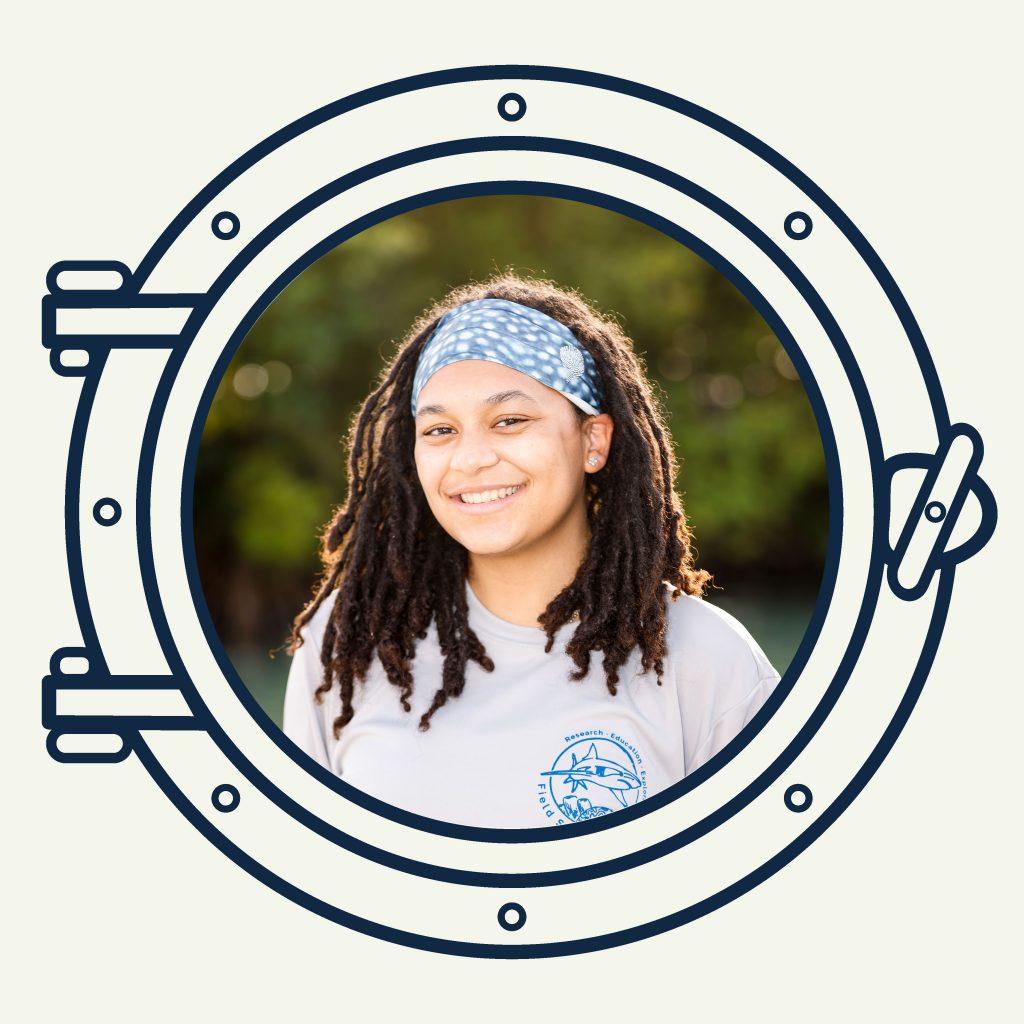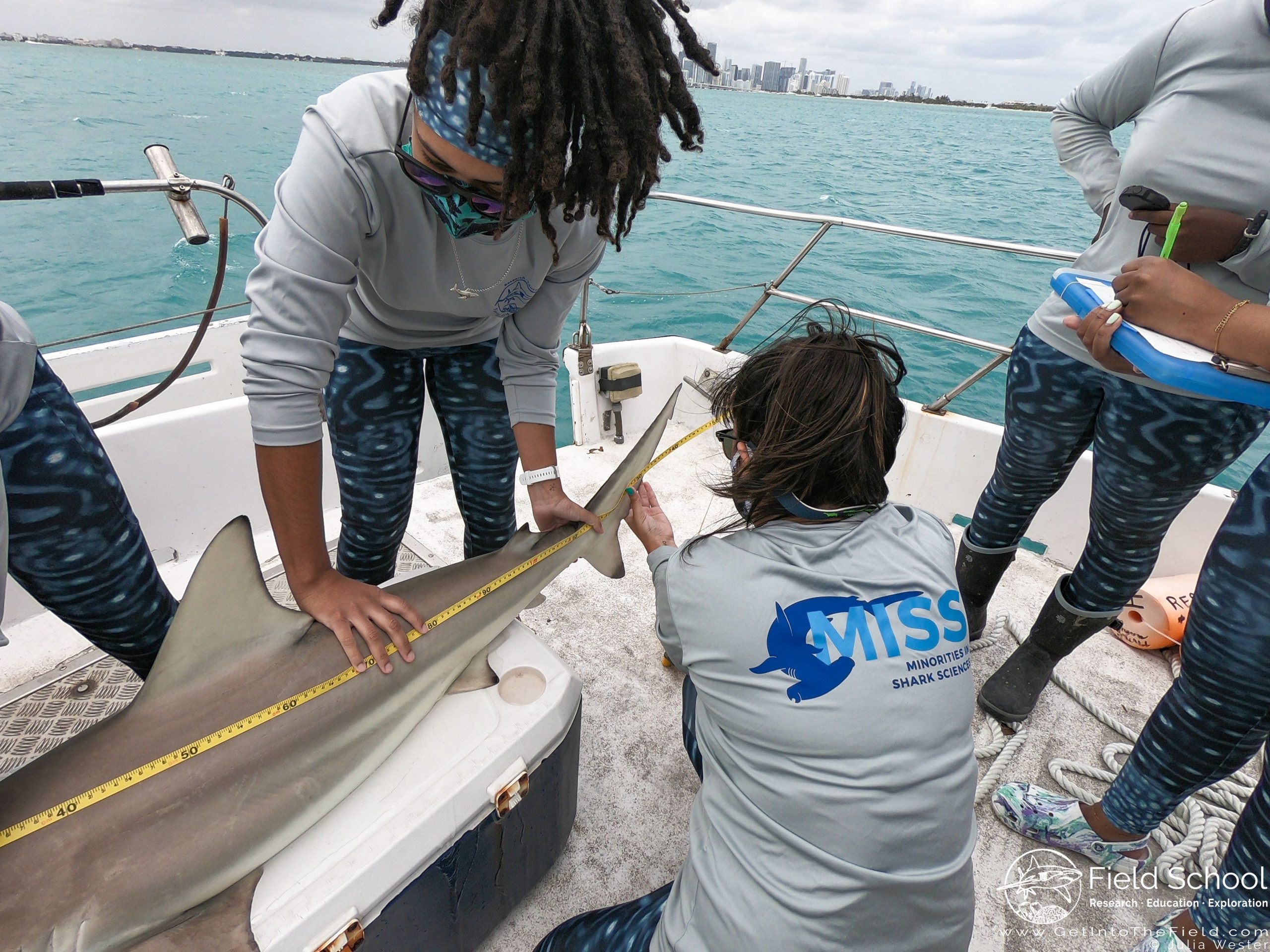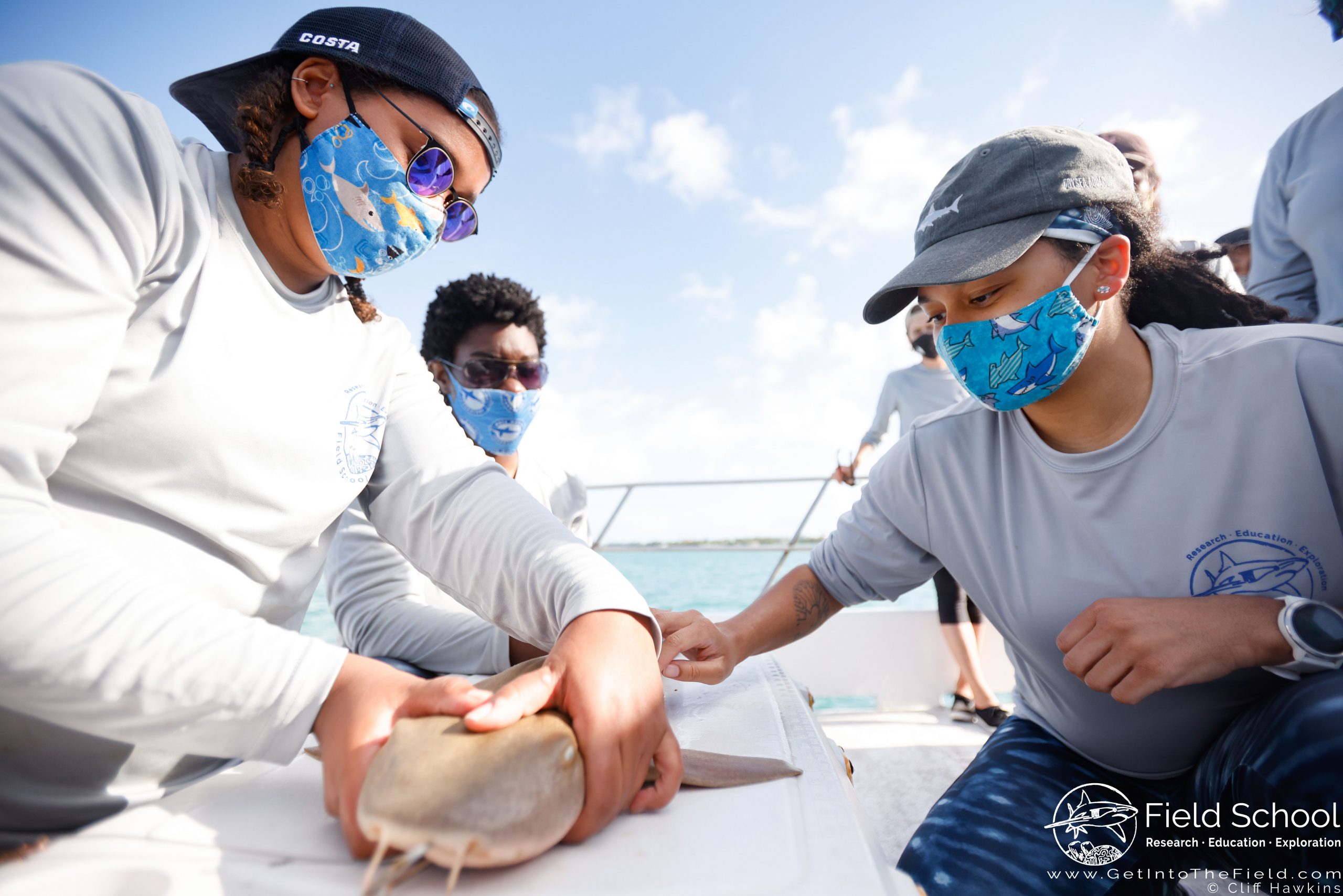

Student Spotlight: Jaida Elcock
Biological Oceanography PhD student and science communication extraordinaire.
Jaida Elcock is a first-year PhD student studying shark movement ecology in the MIT/WHOI Joint Program. Her research seeks to understand what sharks are doing on a day to day basis and how they interact with their physical habitat. She is a co-founder and Director of Public Relations for Minorities in Shark Sciences (MISS), a non-profit that seeks to uplift women and gender-minorities of color in the field of shark science.

Can you tell us about your background and what you did prior to the Joint Program?
Growing up, Jaida was always interested in science. She always knew that she wanted to work with animals and science, but wasn’t sure what that would look like until she found a passion for marine science in high school. Jaida went to college at Northern Arizona University, where, despite being surrounded by deserts, she found a path to marine science and wildlife ecology. She started graduate school at the University of Washington studying shark movement and ecology, and transferred to the MIT-WHOI Joint Program in 2021 when her advisor, Dr. Camrin Braun, accepted a position at WHOI.
Jaida is now a first-year PhD student in the Biological Oceanography department and is working with Camrin Braun to study what sharks do on a day to day basis and how they interact with their physical environment. Outside of learning about shark movement ecology and habitat use, Jaida also uses a variety of social media platforms to create science communication and outreach content that is both extremely engaging and inspiring.

What sparked your interest in science communication?
It all started with two twitter accounts Jaida ran in high school and college. Both were for random animal facts, one dedicated to land animals and the other to marine animals. She recalls that although neither gained much traction, with maybe 20 followers each, she kept them going because of how much fun it was to run the accounts. During an internship at Friday Harbor in Washington, she was inspired by Adam Summers to convert the marine animal account into a science twitter–and @soFISHtication was born. Although initially reluctant to join TikTok (#vinestan), Jaida was inspired to join the platform because of the niche science accounts that were communicating a range of fun science topics. In December 2019, she started @sofishtication on TikTok, where she posts fun, engaging videos with random facts about marine animals!
What science communication initiatives are you currently involved in?
Jaida’s personal SciComm accounts (all handles linked at the bottom of this article) allow her to share her science and passion with the general public, while also connecting with the science communicator community! Definitely checkout her personal twitter (@soFISHtication), where she talks about the “personal” side of being a scientist to help demystify the experience of graduate school and research.
One project Jaida was super excited to talk about was “Shark Madness”, which was put on through the Minorities in Shark Sciences (MISS) group. Shark Madness is the ultimate shark showdown where 32 different shark species face off in a bracket for the title of Best Shark (no spoilers here, go check out @miss_elasmo on Twitter for the 2022 winner)! The competition was started in 2021 as a last minute brainchild of Jaida’s, and it received funding this year to continue as an interactive educational campaign. Set to happen each March, Shark Madness pits various shark species, like the Wobbegong or Bonnet Head, against one another in an epic showdown to discover the greatest shark species! Participants have the chance to fill out their brackets at the start of the competition, gain points as the brackets progress, and compete for prizes at the end of the month. The bracket progresses throughout the month as different members of MISS post educational videos about the shark contenders who are going head to head that week! Each video pits two sharks against each other by offering fascinating shark facts; for example, did you know that Greenland sharks are believed to be the oldest living vertebrates on the planet, and that there are very likely some Greenland sharks who lived through the colonization of America AND the invention of the iPhone? Even if you don’t participate in the bracket competition, following along with the videos and showdown of sharks can be a fin-tastic experience!
Can you tell us more about MISS and how you got involved?
Jaida is one of four founding members of Minorities in Shark Sciences (MISS), a non-profit organization dedicated to supporting women and gender-minorities of color in the field of shark science. MISS was founded in 2020 amid the civil unrest and #blackinnature movement. The group is helping to expand opportunities in the field of shark science by offering summer camps, workshops, free shark-related educational content, internships, and fellowships. The organization emphasizes the importance of providing fully funded and/or paid opportunities in the effort to break down social and financial barriers to gender minorities in science. In this way, MISS is making waves in the field of shark science by improving accessibility and equitability for minorities, while shifting away from the “pay to play” paradigm that defines many fields of science. Additionally, the group has also created a community brimming with hope and opportunity by uplifting the voices of women and gender-minorities in shark science.

Are there any challenges you’ve encountered in science communication?
Misinformation can be a huge challenge. Jaida reflected on how she understands why some people might have a hard time believing scientists, especially because the internet has provided a platform for misinformation to easily spread. For Jaida, this can manifest when people question her about the existence of the Megalodon, an extinct species of shark that lived some 20 million years ago. Scientists know that the Megalodon does not exist in the modern ocean, but a recent “documentary” purported that the ancient shark may still lurk in the depths of the ocean. Scientists and science communicators will often find themselves combating misinformation like this, which can make it incredibly difficult to convey their true messages regarding science or advocacy. Combating misinformation, and the disrespect for science that can stem from misinformation, is one of the biggest hurdles that Jaida has come across in science communication. Jaida suggests that citing your sources, being willing to engage in respectful conversations with your audience, and building trust with your audience are some of the best ways to address the challenges that come with communicating science to broad audiences.
Do you have any advice for people who want to communicate their research to the general public?
Science communication is a powerful way to bridge the gap between scientists and the general public, but it does take practice! Science communication isn’t always easy and it requires that you really know your audience. Like many things in life, science communication is a continual learning process where you should be open to feedback and improve as much as possible. In the end, there is no “wrong” way to communicate science, as long as you are communicating accurate science and having fun while doing it!
Read more of Through the Porthole Issue #5
Learn more about Through the Porthole
Learn more about the MIT-WHOI Joint Program